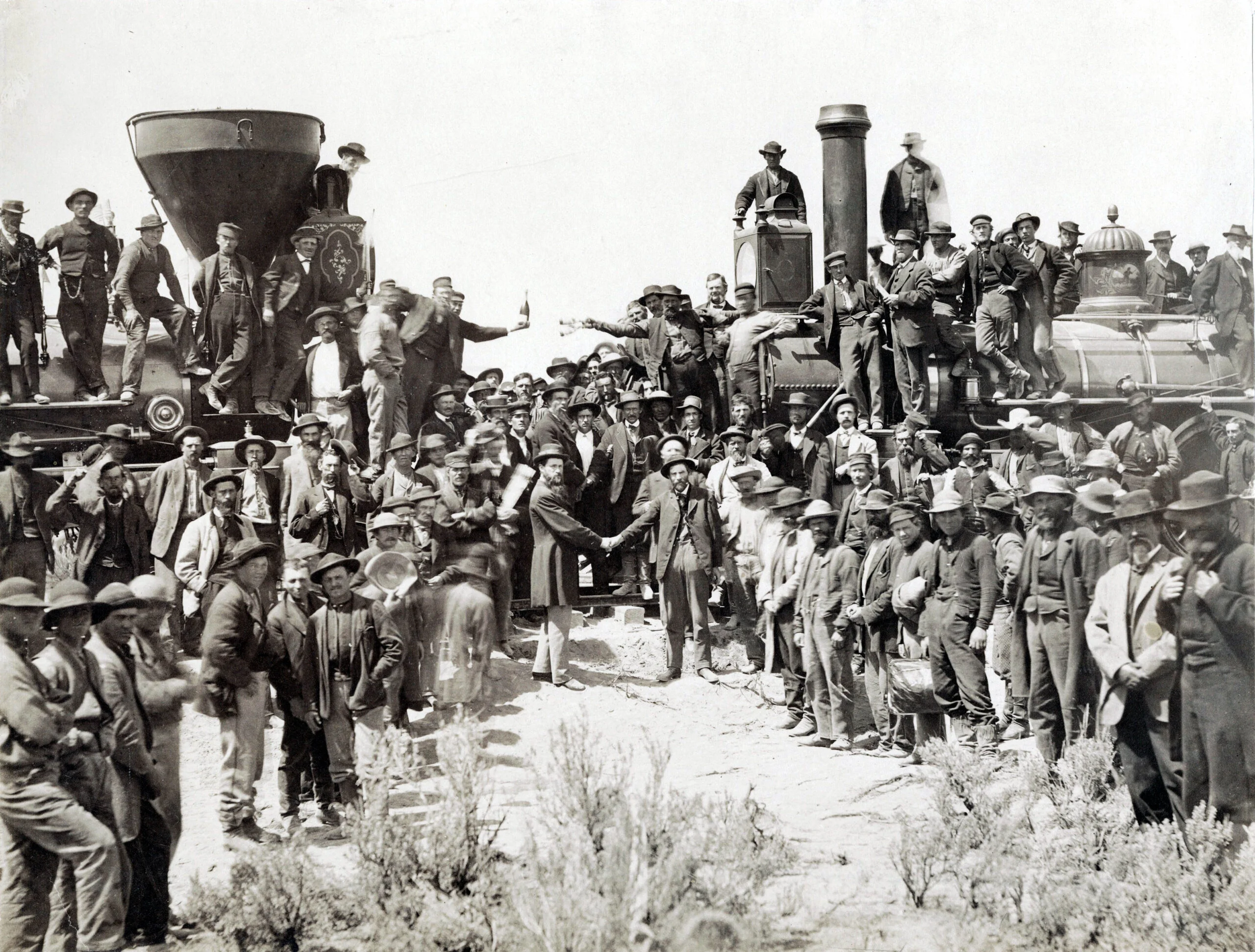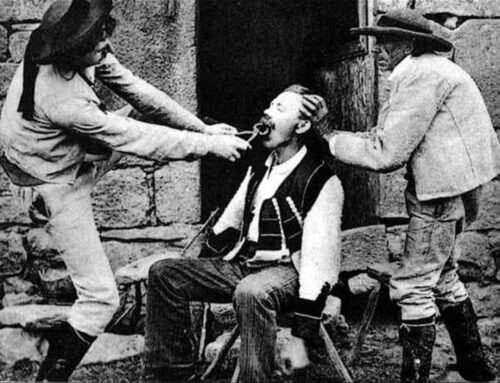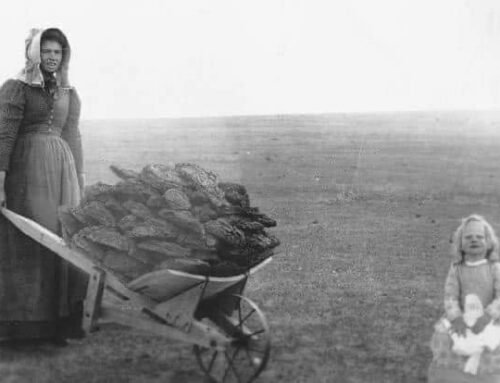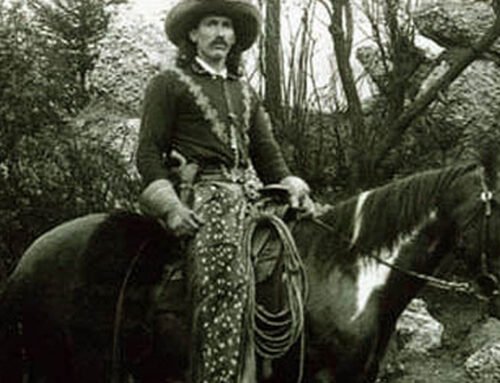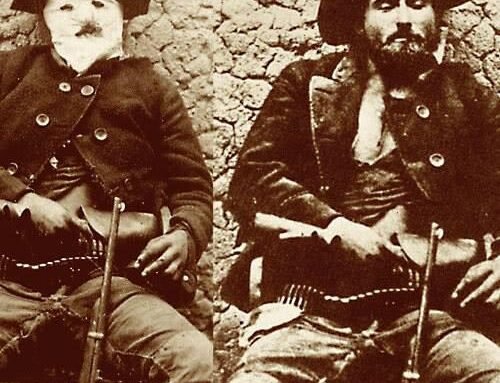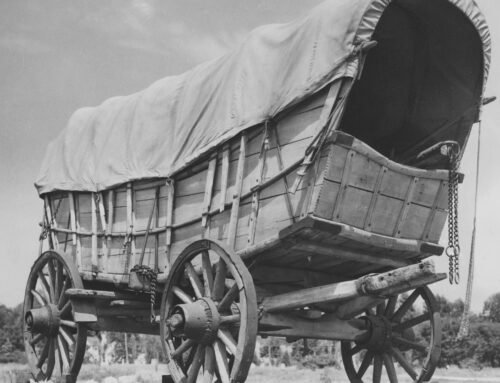The Transcontinental Railroad
By western author Nick Brumby

“D-O-N-E.”
— W.N. Shilling, a telegraph operator for Western Union, tapped out this word in Morse Code on the telegraph, as soon as the final rail spike had been driven into the ground, to let the world know that the Transcontinental Railroad was finished.
Seven years, 1,911-miles of track, and countless millions of railway sleepers, rail ties, tracks and rail spikes. It was the ‘Space Program’ of the American Old West.
The Transcontinental Railroad was the project that connected the east and west coasts of the United States of America and made it possible for USA to become the greatest country in the world.
The Transcontinental Railroad was (and is) one of the greatest achievements in American history. However, the irony about the Railroad was that it didn’t actually reach the East or West coasts. It ran from California to Omaha, connecting the well-established rail systems of the east with the rapidly growing states and settlements in the West.
It was built between 1863 and 1869 to join the eastern and western halves of the United States. Known as the “Pacific Railroad” when it opened, this served as a vital link for trade, commerce, and travel and opened up vast regions of the North American heartland for settlement.
 By 1860, the United States had more than 30,000 miles of railroad, mostly concentrated in the Northeast and Midwest, connecting major hubs like New York, Philadelphia, Chicago and St. Louis. However, there wasn’t much past Omaha, and travelers were forced to continue by stagecoach, horseback, wagon or (if no other option) by foot if they wished to travel further west.
By 1860, the United States had more than 30,000 miles of railroad, mostly concentrated in the Northeast and Midwest, connecting major hubs like New York, Philadelphia, Chicago and St. Louis. However, there wasn’t much past Omaha, and travelers were forced to continue by stagecoach, horseback, wagon or (if no other option) by foot if they wished to travel further west.
All options were slow, dirty, and extremely dangerous. Bandits, Native American tribes and the hazards of the natural environment took a steady toll on those who headed West. Something had to change.
In 1862 Congress passed the Pacific Railway Act, authorizing two companies to begin construction on the Transcontinental Railroad. The Central Pacific Railroad would forge the path east from Sacramento, while the Union Pacific Railroad would lay track from Council Bluffs, Iowa. Where the two companies would meet was not yet known.
Each company stood to make a fortune if they could overcome the many obstacles in their way. The government paid them $16,000 per mile (approximately $483,000 per mile today) for track laid on a level grade, $32,000 per mile (about $965,000 per mile today) for track laid in foothills, and $48,000 per mile (or about $1,448,000 per mile today) for track laid in mountains.
 However, it didn’t end there. Each company was also granted a 200-foot right-of-way corridor along the entire track, lands for additional facilities like sidings and maintenance yards. In addition, each company was also granted alternate sections of government-owned lands—6,400 acres per mile—for 10 miles on both sides of the track, forming a checkerboard pattern.
However, it didn’t end there. Each company was also granted a 200-foot right-of-way corridor along the entire track, lands for additional facilities like sidings and maintenance yards. In addition, each company was also granted alternate sections of government-owned lands—6,400 acres per mile—for 10 miles on both sides of the track, forming a checkerboard pattern.
The total area of the land grants to the Union Pacific and Central Pacific was larger than the area of the state of Texas: federal government land grants totaled about 130,000,000 acres, and state government land grants totaled about 50,000,000 acres. At a time when land was limitless and the empty frontiers beckoned, it must have seemed like a bargain at the time.
The Union Pacific’s 1,087 miles of track started in Council Bluffs, Iowa, on the eastern side of the Missouri River. The Central Pacific laid 690 miles of track, starting in Sacramento, California, and over the rugged 7,000-foot Sierra Nevada mountains into the new state of Nevada.
Each company recruited whoever was available to build the actual track. The Union Pacific relied mainly on Irish workers, many of whom were famine immigrants and fresh off the battlefields of the Civil War. Most of the engineers were ex-Army men who had learned their trade keeping the trains running during the War. The whiskey-drinking, rabble-rousing work crews made their way west, setting up temporary towns that came to be known as “hells on wheels.”
The Central Pacific Railroad faced a problem hiring labor in the more sparsely settled West. It turned to Chinese immigrants, who had flocked to the US as part of the gold rush. By 1869, nearly 20,000 Chinese laborers had worked the Central Pacific line at some point, making up ninety percent of the workforce.
Laborers were paid just $1 per day and worked 12-hour shifts, six days per week. The construction work involved an immense amount of manual labor. Construction equipment in those days consisted primarily of wheelbarrows, horse or mule pulled carts, and a few railroad-pulled gondolas.
The Central Pacific had the tougher terrain, and many people thought the plan to route the line through the Sierra Nevada range impossible, due to weather, elevation, summits and the back-breaking granite-tunneling required. A “three-hundred-man gang spent a full ten workdays clearing a single mile of right-of-way,” wrote one observer.
When they got higher into the mountains, laborers had to tunnel through the granite instead of going around it. Here, Chinese laborers worked around the clock drilling holes, using black powder to blow up granite, then doing it all over again.
 The work was beyond dangerous. The man holding the drill had to be steady or he would get hit by the sledgehammer. The man swinging the hammer had to have muscles like steel. When a hole was at last big enough for the black powder, the crew would fill it, set a fuse, yell as loud as they could while running out of the range of the blast, and hope.”
The work was beyond dangerous. The man holding the drill had to be steady or he would get hit by the sledgehammer. The man swinging the hammer had to have muscles like steel. When a hole was at last big enough for the black powder, the crew would fill it, set a fuse, yell as loud as they could while running out of the range of the blast, and hope.”
Even with this system, the crews sometimes made “between six and twelve inches per twenty-four hours.” It was a stark and grinding contrast to the miles each crew would eventually lay each day as they wound closer to Promontory Summit.
Building the Transcontinental Railroad was a competition, and both sides knew it. When the Union Pacific laid 4.5 miles in one day in 1868, the Central Pacific crews laid just over 6 miles in reply, setting a record that lasted until the Union replied with 8 miles of track in a single day.
Then, with just 14 miles left to build until Promontory Summit, thousands of Central Pacific laborers, including Chinese, Irish, former slaves and Native Americans, worked tirelessly until 7pm, and laid 10 miles and 56 feet of track. It was a remarkable achievement that was never matched,
When it was all said and done, the 10-mile day used more than 25,000 railroad ties, 3,500 rails, 28,000 spikes and 14,000 bolts.
The two ends of the track met at Promontory Summit, Utah, on May 10, 1869. California Governor Leland Stanford drove in The Golden Spike that joined both ends of the first continuous track that joined the East and West Coasts. (Few at the time were aware that the Golden Spike was merely gold plated, gold being much too soft for the purpose).
In perhaps the world’s first live mass-media event, the hammers and spike were wired to the telegraph line so that each hammer stroke would be heard as a click at telegraph stations nationwide. The hammer strokes missed, so the clicks were sent manually by the telegraph operator instead. There is a good case to argue that this, most likely, the world’s first fake mass media event!
As soon as the ceremonial “Last Spike” had been replaced by an ordinary iron spike, a message was transmitted to both the East and West Coasts that simply read, “D.O.N.E.” Travel from coast to coast was reduced from six months or more to just one week.
 The Transcontinental Railroad provided fast, safe, and cheap travel. The fare for a one-week trip from Omaha to San Francisco on an emigrant sleeping car was about $65 for an adult. This would get a passenger a third-class ticket in a sleeping car.
The Transcontinental Railroad provided fast, safe, and cheap travel. The fare for a one-week trip from Omaha to San Francisco on an emigrant sleeping car was about $65 for an adult. This would get a passenger a third-class ticket in a sleeping car.
In one fell swoop the Transcontinental Railroad replaced the Pony Express, wagon trains, and stagecoach lines that transported people and goods from the East to the West. These methods of transportation were much slower and much more dangerous than the railroad system.
Visible remains of the historic line are still easily located. Hundreds of miles are still in service today, especially through the Sierra Nevada Mountains and canyons in Utah and Wyoming. While the original rail has long since been replaced because of age and wear, and the roadbed upgraded and repaired, the lines generally run over the top of the original, handmade grade.

About Nick Brumby
I like a good story. And of all stories, I love westerns the most.
As a kid, I spent far too many afternoons re-watching Clint Eastwood spaghetti westerns, picking up ‘Shane’ for just one more read, or saddling up beside Ben Cartwright when ‘Bonanza’ was on TV each afternoon.
I’m a former journalist and I love horses, dogs, and the occasional bourbon whiskey. I live with my wife, daughter and our ever-slumbering hound in a 1800’s-era gold mining town – our house is right on top of the last working gold mine in the area. There may not be much gold left, but there’s history wherever you look.
I hope you enjoy my westerns as much as I enjoyed writing them!
Happy trails,
Nick

